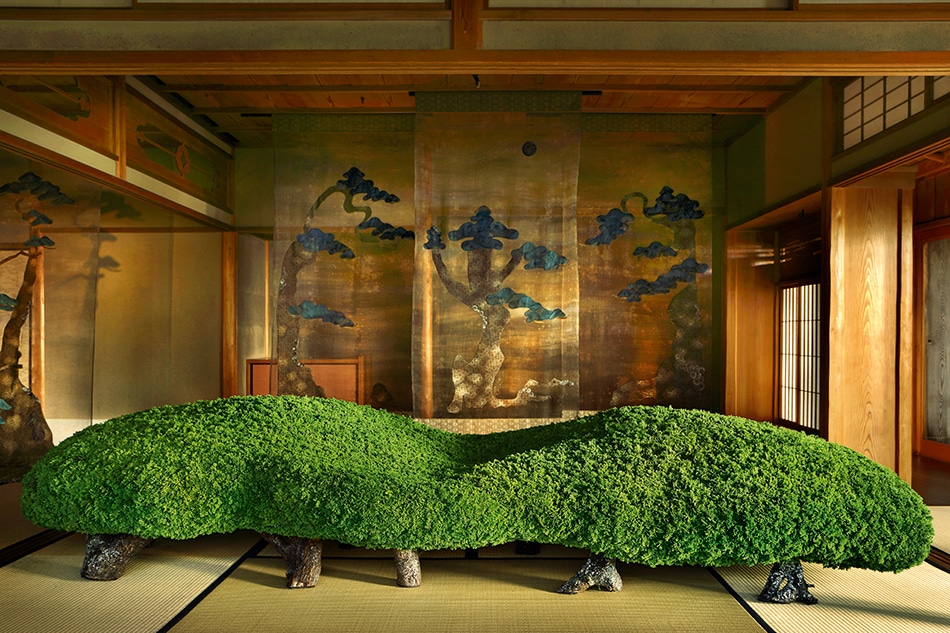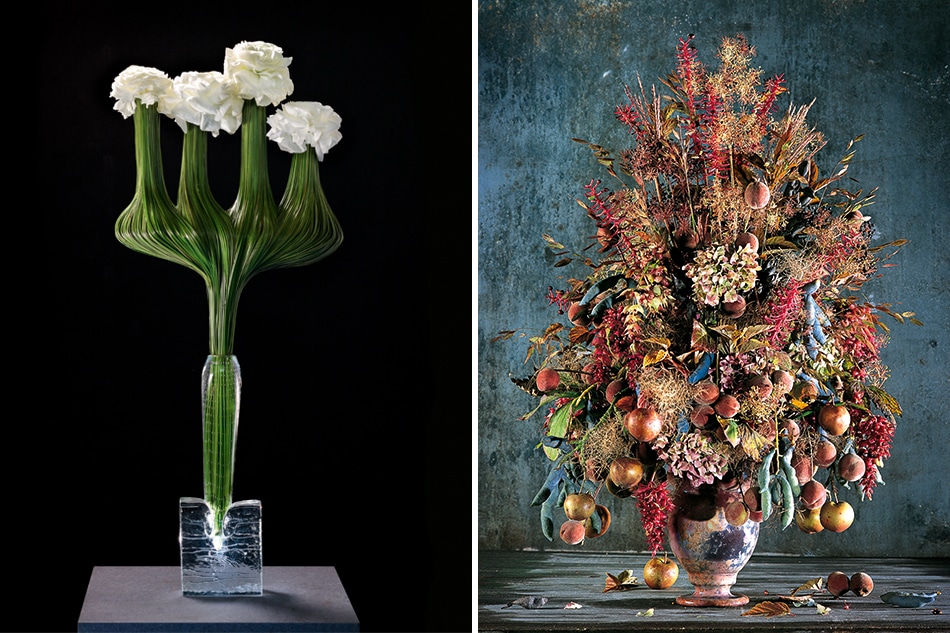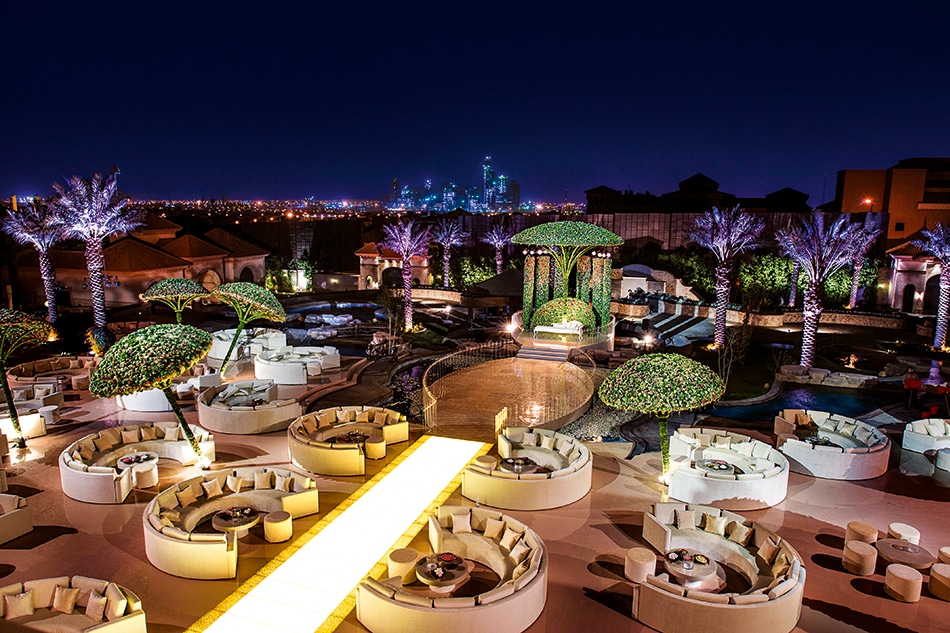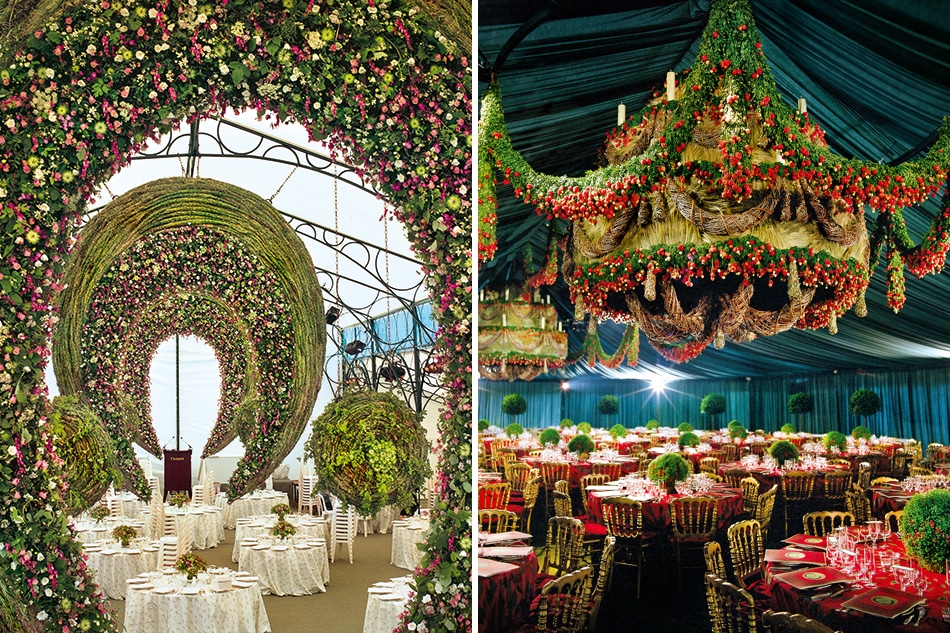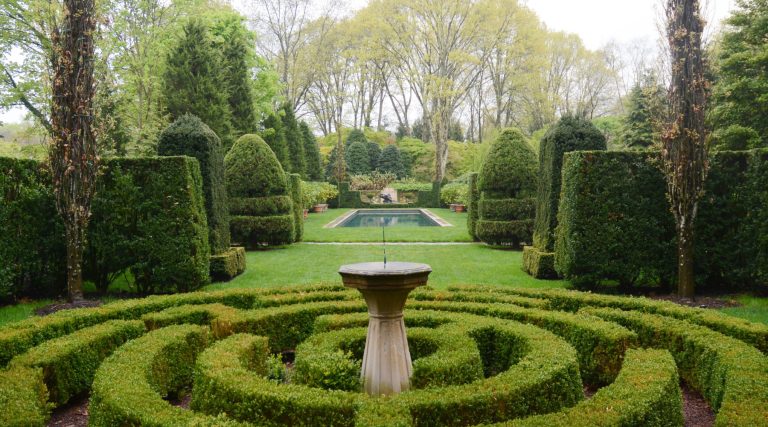
March 12, 2018Belgian floral artist Daniel Ost is this year’s guest designer at the New York Botanical Garden’s Orchid Show, for which he created this structure composed of bamboo and blossoms. Top: A detail shot of Ost’s design. Photos courtesy of NYBG
For its 16th Orchid Show, the New York Botanical Garden’s annual March bedazzler, the beloved Bronx institution has taken a new direction. Its guest collaborator is Daniel Ost, the internationally renowned Belgian flower designer, whose free-wheeling and original flower constructions are frequently compared to the environmental sculptures of British artist Andy Goldsworthy, and employ such ephemeral material as leaves, flowers and twigs. While it is not unusual for NYBG to invite a garden designer to serve as an orchid exhibition’s guest curator — Raymond Jungles and Patrick Blanc come to mind — teaming up with a floral artist is a first. “Working with someone concerned with color, design and texture and interested in every aspect of the plan is definitely something new for us,” says Todd Forrest, the Arthur Ross Vice President for Horticulture and Living Collections.
Flower designer is, perhaps, an inadequate description for Ost, although that is how he refers to himself, saying only, “It is up to the world to judge if I am an artist.” Now in his early 60s, Ost has two flower stores — one housed in a stunning Art Nouveau building in Brussels, the other in his hometown of Sint-Niklaas. But they are only a small part of his story. His clients include royal families, sheikhs, fashion designers and multinational corporations. What draws them to Ost are his astonishing designs, which are as far removed from traditional flower arrangements as Mars from planet Earth.
As a child, Ost loved flowers and was sent by his father to military school to cure him of this strange obsession. It didn’t work. After high school, he was trained in Belgium in conventional flower arranging. Everything changed, he says, when travels to Japan, China and Thailand allowed him to see flowers differently and Noboru Kurisaki, a grand master of ikebana, became his teacher and mentor. As Ost puts it: “I picked up something better and absorbed a new way of design.”

Ost’s designs for the Orchid Show prominently feature bamboo, a material he got to know well during his studies in Japan. Photo courtesy of NYBG

Daniel Ost created this conceptual rendering for the NYBG’s Orchid Show. Photo courtesy of NYBG
The common wisdom of floral arranging is that flowers should be presented as in nature. Ost has turned that concept on its head — not because he thinks flowers and plants do not look beautiful in their natural setting but because he believes that once cut or dug up they are removed from nature and this relationship cannot and should not be replicated. His approach, he says, is to create something that did not previously exist and to “reach people with a new language.”
Ost loves bamboo and uses it frequently in his work, binding and bundling leaves, flowers and plants to make creations that range from sinuous coils of boxwood to autumn leaves strung together with clay and ashes. His compositions are closely aligned to sculpture, immersing delicate flower buds into a cone made of sedges, and discreetly placing white poppies within a tower of green bamboo. All his work is astoundingly original and never gets repeated. “I cannot afford to make copies of my work, so everything I do is a new challenge,” he explains. “Good work needs good ideas, and I am always rethinking.” His pieces have been exhibited in museums, art galleries, fashion shows and flower shows all over the world. He has been made a Knight of the Order of the Rising Sun by the Emperor of Japan, a country where he is better known than in the United States. Possibly, this is because his materials, ephemeral in the extreme, wilt and die in such a brief time. “Were it not for photography,” he admits, “no one would know anything about my work.”

Daniel Ost, this year’s guest designer for NYBG’s Orchid Show, has an impressive client list that includes royal families, fashion designers and multinational corporations. Photo courtesy of NYBG
NYBG’s Orchid Show opened on March 3 and runs through April 22. Working on an exhibition that must look good for almost eight weeks presented Ost with his biggest challenge. He also admits that he finds plants harder to work with than flowers, since they have no stems to twist. After visiting the Garden last summer, Ost presented NYBG with several different designs, and the one they settled on consists of three separate installations in three different areas of the Enid A. Haupt Conservatory. According to Forrest, it has been an intensive collaboration: “Ost knows what he wants, and our job has been to find the way to do it.”
In the main entrance to the conservatory, Ost has designed a massive tower. Its white pillars, at least 18 feet tall, are intricately entwined with translucent plastic tubing to which are attached more than 2,000 orchids, all neatly threaded into every twist and turn of the piping. In another gallery stands a giant beehive-shaped armature of bamboo on which is displayed a breathtaking diversity of orchids. The color scheme here is restricted to a melange of ochers, yellows and browns. The effect is dazzling. The final display is a series of green bamboo lattices, suspended from the ceiling and interspersed with coils of more see-through tubing, displaying yet more orchids. Seen as a whole, the exhibit is startling, playful and vibrant and should considerably extend the community of Ost admirers during its two-month run.


